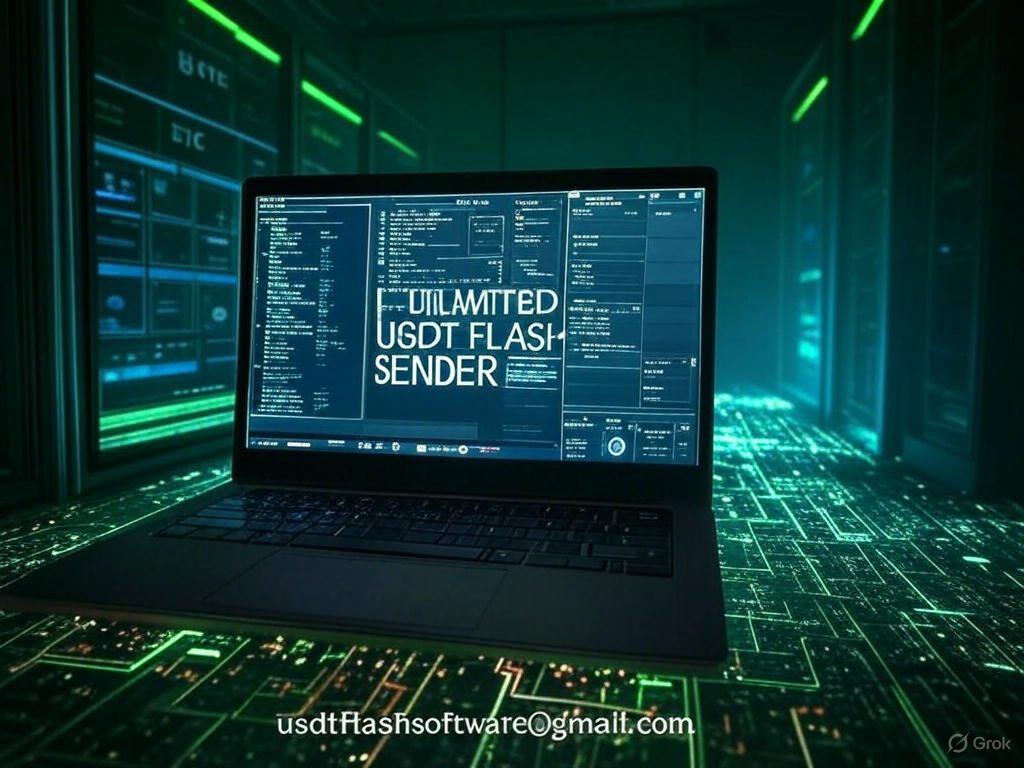Shocking Facts About Flash USDT P2P Trading You Should Know
Table of Contents
- Introduction to Flash USDT P2P Trading
- How Flash USDT P2P Trading Actually Works
- The Surprising Capabilities of USDT Flash Technology
- Hidden Risks and Security Concerns
- The Legal Gray Area of Flash USDT Transactions
- Impact on the Cryptocurrency Ecosystem
- Who Really Benefits from Flash USDT Technology
- Alternatives to Consider
- FAQs About Flash USDT P2P Trading
- Conclusion: Making Informed Decisions
Introduction to Flash USDT P2P Trading
The cryptocurrency world is constantly evolving, with new technologies emerging that promise to revolutionize how we handle digital assets. Flash USDT P2P Trading has entered this space as a controversial yet intriguing innovation that claims to offer unprecedented transaction capabilities. This technology, which enables users to “flash” or create temporary USDT transactions of up to $50 million daily with a lifespan of 300 days, has been generating significant buzz in crypto communities worldwide.
But what exactly is Flash USDT P2P Trading, and why should you be informed about it? Unlike conventional USDT transactions that require actual ownership of the tokens, flash trading operates in a fundamentally different manner that raises important questions about legitimacy, security, and legality in the cryptocurrency ecosystem.
How Flash USDT P2P Trading Actually Works
Flash USDT P2P Trading operates through specialized software that creates transactions that appear legitimate on the blockchain. The process involves:
- Creating temporary USDT tokens that look indistinguishable from real tokens on the blockchain
- Generating valid transaction hashes that can be verified on block explorers
- Enabling these tokens to be traded, transferred, and split like regular USDT
- Making the tokens compatible with P2P platforms and decentralized exchanges
The technology behind Flash USDT creates what are essentially sophisticated simulations of legitimate blockchain transactions. These simulations can bypass certain verification mechanisms by exploiting vulnerabilities in how some platforms validate USDT transactions. The software creators claim these transactions can last up to 300 days before potentially disappearing from the blockchain.
The Surprising Capabilities of USDT Flash Technology
The advertised capabilities of Flash USDT P2P Trading are nothing short of extraordinary—and that should be your first red flag. According to promoters, users can:
- Transfer up to $50 million daily without actually owning that capital
- Split large transactions into smaller amounts for easier management
- Trade and swap these tokens across various platforms
- Operate globally without restrictions or limitations
- Integrate with all major wallets and exchanges
Hidden Risks and Security Concerns
Despite the attractive promises, Flash USDT P2P Trading comes with severe risks that aren’t always transparently disclosed:
- Potential legal consequences for creating artificial transactions
- Risk of fraud charges for misrepresenting asset ownership
- Possibility of funds suddenly becoming invalid after the flash period
- Security vulnerabilities in the software itself
- Personal data exposure when using unauthorized third-party tools
- Blockchain networks actively working to detect and prevent such activities
Most concerning is that recipients of flash USDT transactions may have no way of knowing they’ve received artificial tokens rather than genuine USDT. When these tokens eventually disappear or become invalid, the recipients bear the loss, having potentially exchanged real assets for temporary tokens.
The Legal Gray Area of Flash USDT Transactions
From a legal perspective, Flash USDT P2P Trading exists in an extremely problematic space. Creating the appearance of owning assets you don’t actually possess with the intent to trade them raises serious legal questions including:
- Potential violations of anti-fraud regulations in most jurisdictions
- Breaches of terms of service for cryptocurrency exchanges and wallets
- Possible violations of money transmission laws
- Tax implications for misrepresented asset ownership
- Liability for damages caused to counterparties
Regulatory bodies worldwide are increasingly scrutinizing cryptocurrency transactions. Activities that deliberately create the appearance of legitimate transactions without the underlying assets are likely to face increasing legal challenges as regulation matures.
Impact on the Cryptocurrency Ecosystem
If Flash USDT P2P Trading were to become widespread, the implications for the broader cryptocurrency ecosystem would be severe:
- Undermined trust in the USDT stablecoin and similar assets
- Increased volatility as flash transactions suddenly disappear
- More stringent verification processes that slow down legitimate transactions
- Potential loss of funds for innocent traders who accept flash USDT
- Damage to the reputation of cryptocurrency as a legitimate financial system
The fundamental value proposition of blockchain technology centers on transparency, immutability, and trust. Systems designed to create temporary transactions that disappear directly contradict these core principles and threaten the foundation of cryptocurrency adoption.
Who Really Benefits from Flash USDT Technology
The primary beneficiaries of Flash USDT P2P Trading are unlikely to be legitimate traders or businesses:
- Sellers of the flash software who charge substantial licensing fees ($3,000-$5,000)
- Those looking to artificially inflate their apparent holdings
- Participants in schemes requiring the temporary appearance of large capital
- Individuals seeking to execute fraudulent transactions
Legitimate traders and businesses have little incentive to use technologies that create temporary transactions rather than conducting real business on the blockchain with actual assets. The high licensing costs and legal risks make this an impractical solution for legitimate business needs.

Alternatives to Consider
If you’re looking for efficient ways to handle USDT transactions, consider these legitimate alternatives:
- Using established, regulated cryptocurrency exchanges
- Legitimate P2P trading platforms with proper escrow systems
- DeFi platforms that offer loan and liquidity solutions
- Stablecoin bridges for cross-chain transactions
- Payment processors that specialize in cryptocurrency transactions
These alternatives provide the efficiency and flexibility needed for cryptocurrency transactions without the legal and ethical questions raised by flash trading software.
FAQs About Flash USDT P2P Trading
Is Flash USDT P2P Trading legal?
Creating artificial transactions that appear to represent real assets could potentially violate fraud laws in many jurisdictions. The legality is questionable at best and could result in serious legal consequences.
Can recipients detect if they’ve received flash USDT?
In many cases, no. The transactions are designed to appear legitimate on block explorers, making it difficult for recipients to distinguish between real and flash USDT until the transaction period expires.
What happens after the 300-day period?
The flash transactions may disappear from the blockchain or become invalid, potentially resulting in losses for anyone who accepted these tokens as payment.
Do legitimate cryptocurrency businesses use flash technology?
No reputable cryptocurrency business would use technology designed to create the appearance of owning assets they don’t actually possess. Such practices contradict the transparency principles of blockchain technology.
Are there any legitimate use cases for this technology?
While proponents might suggest testing or educational purposes, the high licensing costs and potential for misuse make these justifications questionable. Legitimate blockchain testing can be conducted on test networks without creating misleading transactions.
Conclusion: Making Informed Decisions
Flash USDT P2P Trading represents a technology that promises extraordinary capabilities but raises serious ethical, legal, and security concerns. The ability to create transactions worth millions without actually owning those assets fundamentally contradicts the principles of transparency and trust that underpin blockchain technology.
As cryptocurrency adoption grows and regulatory frameworks mature, technologies designed to create temporary or artificial transactions are likely to face increasing scrutiny and potential legal challenges. For traders, businesses, and cryptocurrency enthusiasts, the safest approach is to engage only with legitimate, transparent blockchain transactions using actual assets.
Understanding the risks and realities of Flash USDT P2P Trading is essential for anyone involved in the cryptocurrency space. While the promises may sound attractive, the potential consequences—both legal and financial—make this a technology that deserves extreme caution and skepticism.
